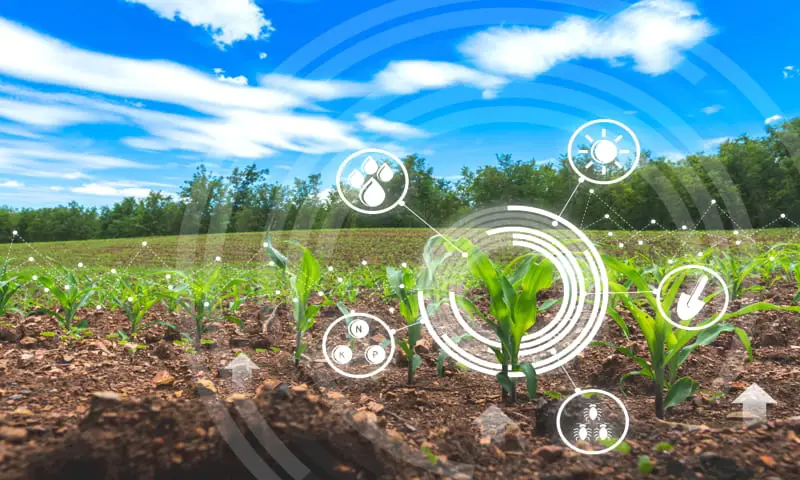How EOSDA Crop Monitoring Transforms Yield
The technology trends in the modern world are causing many industries to reinvent themselves. An agricultural computer as well as a computer and a mouse, are the farmers of the future. Furthermore, the proper use of computer science can help in the enhancement of the field activities. Sensor devices can, for example, detect the water content in the soil and in the plants, the temperature, and consequently, the overall condition of the fields.

Crop health monitoring systems are a vital part of the introduction of crops in the form of smart agriculture, where the use of different technologies for the control and monitoring of plant health are the main components. Data acquisition is a technology for plant care and is —hello—a means of taking care of plants and a means of making the right decision in such areas as the state of crops, irrigation, applying fertilizers, and in general farm management.
Using the technology, farmers are given new chances that their involvement in the scientific research process is the highest. They can use the data collected for it to their advantage. The fact that they collect and analyze data from different sources improves their productivity, but it is not the only one. It also leads to reduced emissions by agriculture, thus, making it more sustainable.
Agriculture monitoring along with insurance companies and other business entities facilitates a better understanding of the farm events and risk management. Insurance companies play the significant role of helping farmers to increase their products and reduce expenses in the face of population growth and the increasing demand for products. Through the use of the smart farming techniques, the farming business will be able to gain a competitive edge.
The systems are developed to facilitate the farmers in taking data-backed judgements with respect to the farm management methods, resource utilization correction, and field output maximization. With the aid of satellite images for agricultural land monitoring, thanks to satellite crop monitoring of agricultural lands, the farmers and other stakeholders of the business can adopt an aggressive strategy in dealing with matters and proceed to targeted and sustainable crop management.
Why Crop Monitoring Is Essential
Precise crop monitoring is the requisite action for impairing pests, diseases, and weeds as well as avoiding plant damage. Please note that every year the biological composition of pests mutates and changes; hence, it is impossible to control new threats by using traditional, commonly used methods. Repeatedly applying corrective measures, can be a very crucial mistake.
Crop monitoring helps to recognize pests and diseases at the beginning of the infection. Early identification of symptoms, in turn, provides better opportunities and longer time frames for the plants to be treated and saved from serious harm. The overuse of pesticides could easily be avoided by quick identification as well. Modern technology ignores technology like remote sensing and the Internet of Things and focuses on these two as the main monitoring technologies. Timely detection and ecologically sustainable practices protect and optimize crop health and production.
Farmers can, to be sure, make smart decisions concerning planting dates and growing practices for maximizing productivity and profitability through new technological methodologies and data analysis. which is, of course, the historical weather pattern data collection and aggregation thereof. This strategy resolves the cut-throat insecurities about crop yields and makes sure that the resources are used correctly and yield good results which then can be shared by all.
The use of this technology is very important when it comes to developing solutions to climate change issues. It provides the growers with the overall info about grown crop plants and productivity which makes it easier to spot the spots most likely to be affected by the weather changes. Furthermore, the growers can use this information to adopt risk mitigation strategies that are more helpful and thus, mitigate some of the particular threats that arise from the climate changes.
[the_ad id=”453″]
The use of advanced techs, common to farming now and data-based decision-making maximize a farmer’s output by better allocation of resources. Soil moisture and weather forecasts will guide your choice of watering according to the crop’s needs. Such technologies as IoT, AI, and satellite imagery are even giving preference to “green” and fertilization and applying pesticide in an efficient manner meanwhile lowering the environmental burden. Weathering out the saturation of data from numerous sources makes water use efficient and most probably mutes fertilizer waste.
The IoT sensors and satellite data are usually giving near-real-time information together with trustable data analytics which means selection of crops, determination of planting dates, and optimization of irrigation, fertilization, pest control methods becoming possible. This strategy results in growth in the agricultural production, profit, and sustainability sectors.
The Role of Remote Sensing in Crop Monitoring
Ever since the beginning of agriculture, crop monitoring using satellite images has resulted in a breakthrough. One main source of information that is provided by remote sensing is the focus on the analysis of vegetation index data and other improvements, which are used to monitor large-scale crop conditions.
With satellite imagery, there can be a monitoring of crop growth throughout the growing season, from planting to harvest, thus identifying the alternations experienced in the course of the season and other abnormalities like dry areas, water problems, soil compaction, and weed patches.
Through the use of geo-referenced imagery, one can detect issues and the amount of damage that has been caused. Satellite-provided data gives the farmers a chance to access any information that is invisible to the naked eye. Remote monitoring of crops aids in the optimization of agricultural operations and hence, the management is improved.
Beneficial Features of EOSDA Crop Monitoring
EOSDA Crop Monitoring, which is one of the components of precision agriculture, is a product of EOS Data Analytics, a reputable company providing satellite analytics services. Food producers, insurance companies, input providers, and other agricultural industry participants can use this crop monitoring software to get a wide range of useful data, including the health of the crop, soil moisture, the real-time weather forecast, and field activities data.
[the_ad id=”453″]
Spectral indices computations, such as NDVI, are accessible to users and thus provide essential information on the condition of crops at their different growth stages. By means of this, farmers guarantee their timely interventions and with the minimum consumption of inputs by providing the plants with the actually required quantities of resources.
Growers can rightly schedule farm operations, like soil cultivation and fertilization, by estimating an exact 14-day weather forecast and study past weather data (availability since 1979) to single out the climatic events that cause the degradation of the field and low production.
Users enjoy the ease of using several features on one platform the most, which improves their effectiveness. Retrieving current information about the crop’s status aids farmers in making decisions based on facts rather than intuition.
